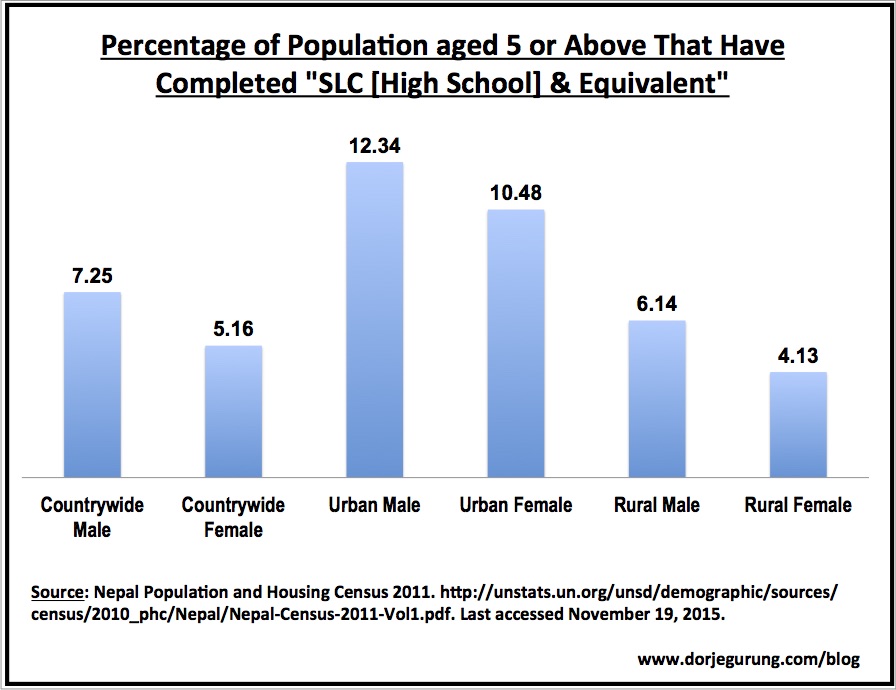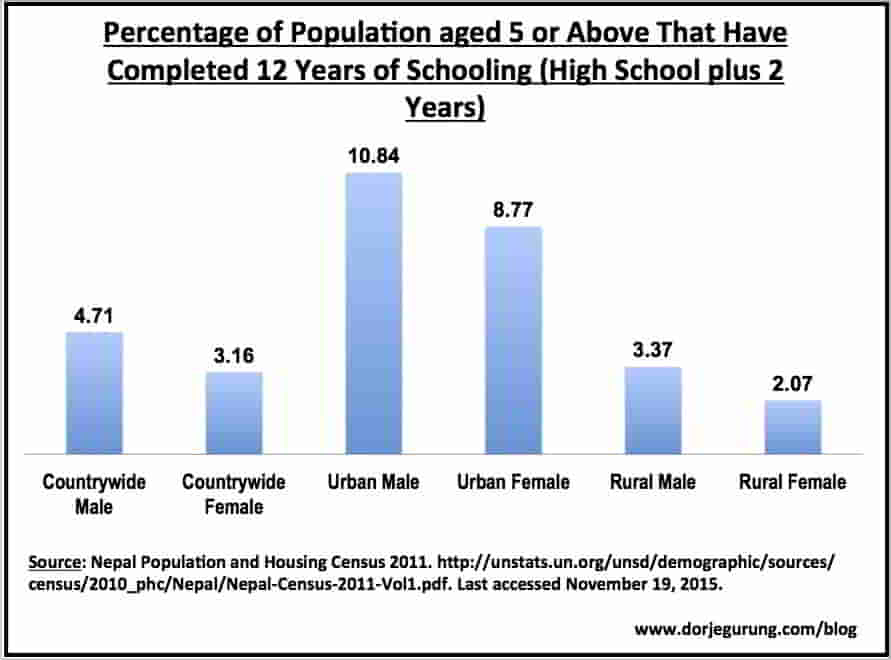On June 13, five days ago, the Office of Controller of Examinations (OCE) published the SLC (School Leaving Certificate) examination results. Once again, there were no surprises — they were appalling! It has again, as every year, laid bare the pathetic state of our education system.
Every child must pass the SLC to continue their education. There are major flaws with SLC (which I described in SLC: The Ticket That Isn’t and Ins And Outs of SLC: A Sorry Story) and the entire Nepali education system in general. As far as I am concerned, the difficulties 16 to 18 year olds face with SLC has less to do with their lack of ability and more to do with the lack of ability of our leadership.
But before I go on to that, here are some numbers.
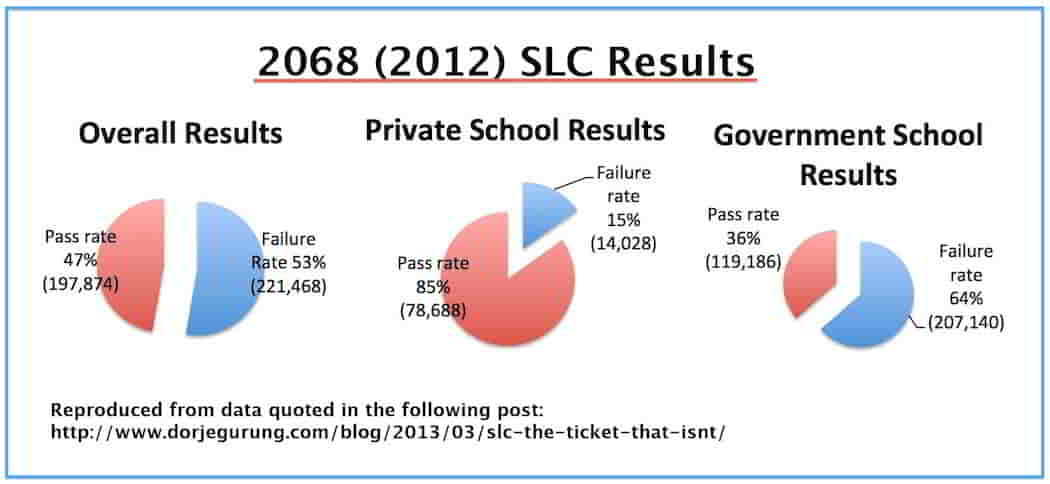
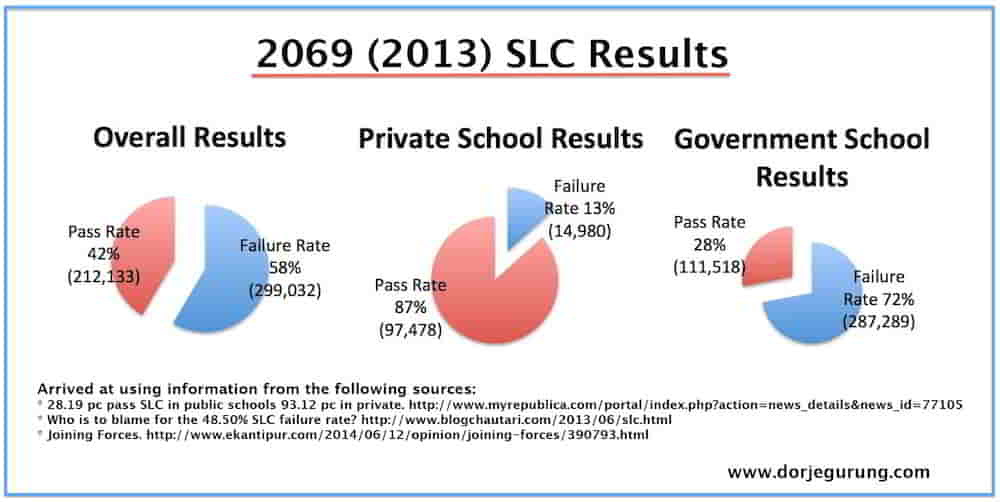
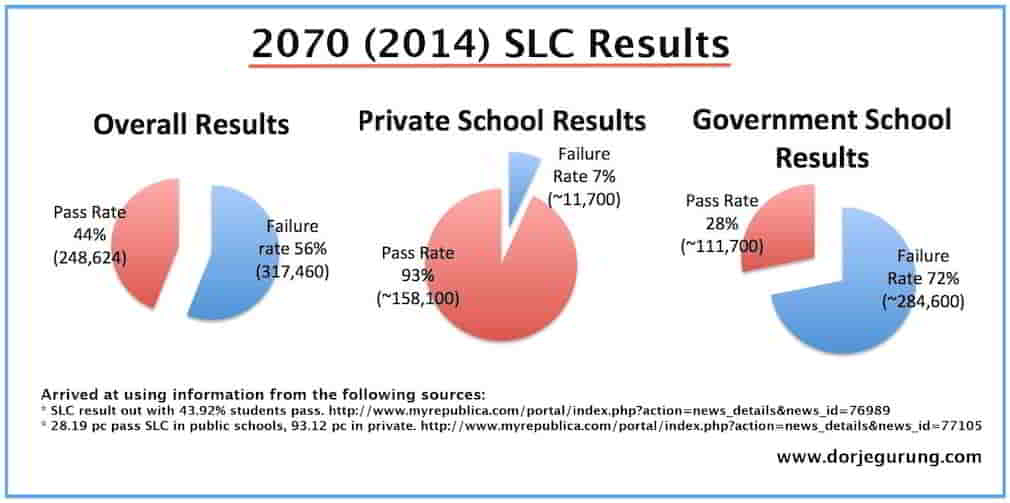
What the above statistics don’t show is the percentage of children that either never make it to school or drop out long before 10th grade!
Only a little over a 3rd of school going children make it all the way through to 10th grade apparently. That means, looking at just the last three years alone, at least 2 million 16-21 year olds with no high school diploma roam the country.
If we go back all the way to when I myself took the exam, over 25 years ago, the statistics was even worse — only 25% of us passed it!
It is no wonder then that the data on high school qualifications, reproduced below, paint a bleak picture. (The data, for people above 5 years of age, come from the National Population and Housing Census 2011 (table 26). (Click on the image to view the original.)
It’s not even that they have it made if they pass the SLC. That’s just one of the series of hurdles that children, especially those from low socioeconomic backgrounds, have to overcome. A significant percentage of children that pass the SLC are unable to continue their education for one reason or another — often that reason is poverty or lack of Higher Secondary Schools (HSS). If such children do make it to an HSS for their two-year intermediate studies, a black hole awaits them.
The percentage of the population that have completed further studies is much much smaller. The data below, also from the 2011 Census Report, are that of those 5 years and above that have completed 12 years of formal education. (Click on the image to view the original.)
In other words, we are a country of millions between the ages of 15-50 with no qualifications and very very little opportunities. I am certain a majority of them consist of Dalits, women, and others belonging to marginalized groups, such as the Tharus and Tamangs.
Is it any wonder then that thousands of young and old alike leave the country in droves every month?
Results of survey conducted in 2009 showed,”Almost half of Nepali households have at least one member working abroad or have a returnee.” About half a million left the country the last fiscal year (2013-14) alone! According to the 2011 census report, a fourth of all families have at least one member living abroad.
On a more sobering note, the almost million or so 15-24 year olds migrant workers currently abroad, are most likely children of adults my age AND from backgrounds similar to mine but weren’t lucky enough to get the educational experience I had. Had my life’s trajectory been different, who knows, one of those children could have been mine!
Is it any wonder then that thousands of these uneducated or unqualified Nepalese fall victim to trafficking to destinations both inside and outside the country?
Is it any wonder then that thousands of our fellow country men and women fall victim to abuse and exploitation in countries such as Malaysia, Saudi Arabia, Qatar and other Gulf countries, leading to, on average, three dead bodies arriving at Kathmandu international airport EVERY SINGLE DAY?
The human cost of our failed education system is staggering, if one sits down to ponder over it! (At least three children this year have reportedly committed suicide after discovering that they had failed SLC, to give another example.)
Who is to blame for this sorry state of affairs? Our leadership!
Our children did not fail SLC; our leaders failed our children. Our leaders have thus failed our future.
* * * * * * * *
Man makes money; money does not make a man.
But, our leadership and an elite influential group of men — yes, mostly men, both local and foreign — are interested in only two things: money and power. In the last 25 years the country has experimented with multiparty democracy, they have created a culture where money is everything and power the means to get it. Money in Nepal talks and buys anything and everything — respect, status, favors etc. — including silence from relevant people as and when necessary.
To that end, what most of our leaders do is squabble among themselves and jostle for position of power and influence so that they can make ever more money. They make money from the state coffers and from average Nepalese, bleeding them. These leaders also make money from the elite groups of men, who dole out the necessary amounts to curry favors…often to circumvent rules, policies and laws, and in turn the elite group make more money themselves!
We have systems (the education system being only one of them) that are so completely corrupt to the core that to expect our leaders to lift a finger to fix them would be an insult to ones own intelligence. Most of the “influential and powerful” leaders we have today have been around since the introduction of the democratic form of governance in 1990, about 25 years ago! Those that aren’t around are dead.
Change will have to come from us, the people. Each one of us must take responsibility for being the change we want to see in our country, and effect change.
I for one, for starters, a year ago, quit my jet-setting international teaching career of over 17 years — paying thousands of dollars per month — to devote my time to improving the quality of education rural Nepalese children attending government schools receive, and to raise a voice on behalf of the marginalized, the voiceless.
* * * * * * * *
Update November 19, 2015
The two histograms have been replaced with the correct ones. The original (which you can see here and here) showed the percentage relative to those who were literate, instead of relative to the whole population of five and older. Hence the percentages are smaller in these.
Update July 20, 2018
Just came across this article published in July 2013 which states that the quality of education at public schools, in spite of doubling of the education budget between 2006-7 and 2012-13, has hardly seen any improvement.
References
Added after the publication of the blog post because of relevance.
The Nepali Times (Jan. 19, 2019). LOWEST COMMON DENOMINATOR. Editorial rightly lamenting “a 25-member High-Level National Education Commission headed by none other than Education Minister Girirajmani Pokhrel has taken the populist route to recommend that all private schools be scrapped in ten years.”

